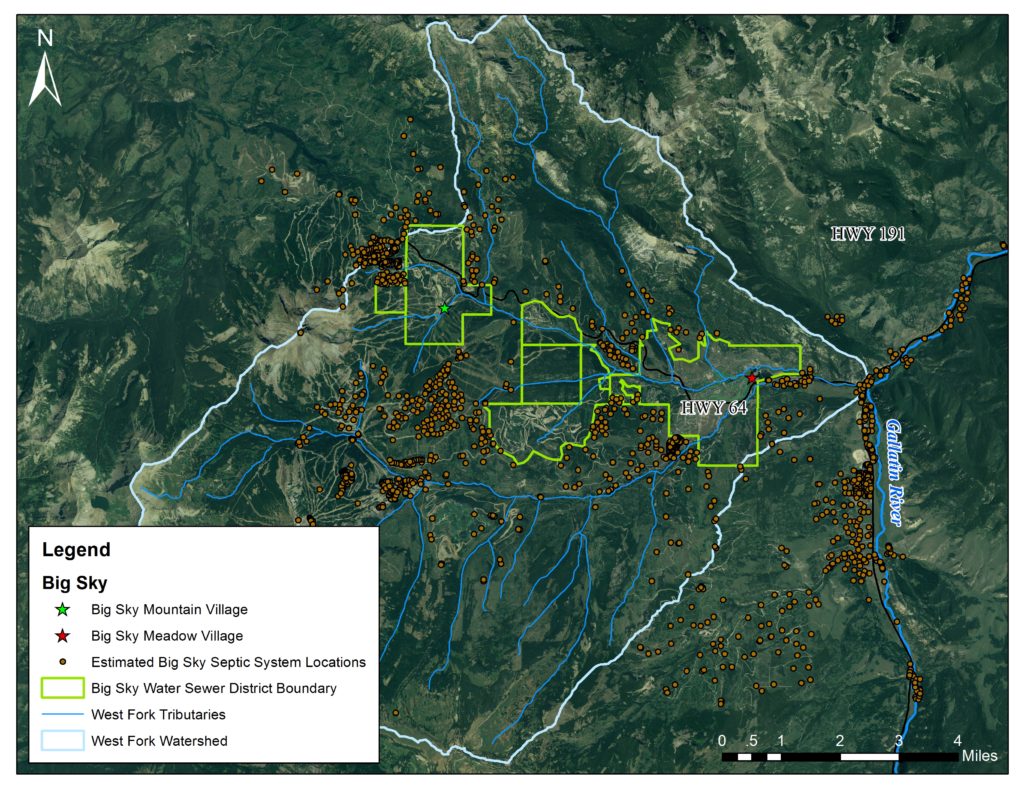
Septic Smart bathroom signage designed by the Lone Peak High School Environmental Science Class. Download your copy here.
The Lone Peak High School Environmental Science class completed a service-learning project to educate the Big Sky Community about septic care and maintenance
This year, the class studied wastewater treatment systems and their relationship to water quality. The students learned about municipal wastewater treatment by touring the Big Sky Water & Sewer District plant and on-site wastewater treatment by developing bathroom signs for the school and businesses with septic systems.
Big Sky is a patchwork of wastewater treatment systems. In Gallatin County, septic permits were not required until 1966. As a result, the total number of septic systems is unknown.
The Big Sky Water and Sewer District services over 850 businesses and homes located in the Meadow and Mountain Villages. The Task Force estimates that over 750 businesses and residences located throughout the Big Sky community have septic systems.
Several streams in the Big Sky area exceed state standards for nitrogen, a nutrient vital to plant growth. Excess nitrogen can stimulate algal overgrowth, which triggers a cascade of negative effects in aquatic ecosystems. Malfunctioning septic systems are one of the leading causes of nitrogen contamination in Big Sky.
Luckily, septic leaks can be prevented! Proper care and maintenance could protect your investment, the community, and the environment.
Septic care starts with proper waste disposal and water conservation. According to the Lone Peak High School Environmental Science class septic care is easy, “If its not toilet paper or it doesn’t come out of you, it doesn’t belong in the loo!”
Regular maintenance is equally important. Experts recommend that you have you tank inspected annually and that you pump your tank as necessary. Generally speaking, you should have your tank pumped every three to five years, but the length of time varies with the amount of waste produced and size of the tank.
Signs that you might have a malfunctioning systems include: bacteria in your well water, wet ground or exceptionally green grass around your drain file, and strong odors. For more information on septic care and maintenance, visit gallatinrivertaskforce.org/septicsmart.
The Gallatin River Task Force and partners will continue to educate the Big Sky community about septic care and maintenance in order to ensure clean, cold, and abundant water for future generations.
This project would not be possible without the support of the Soil and Water Conservation Districts of Montana and the Big Sky School District.


